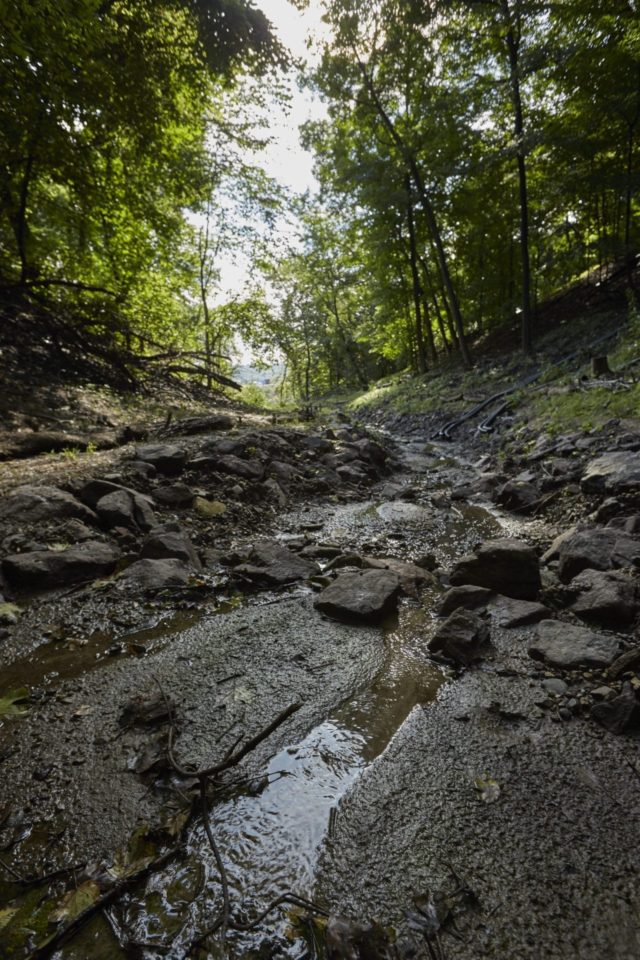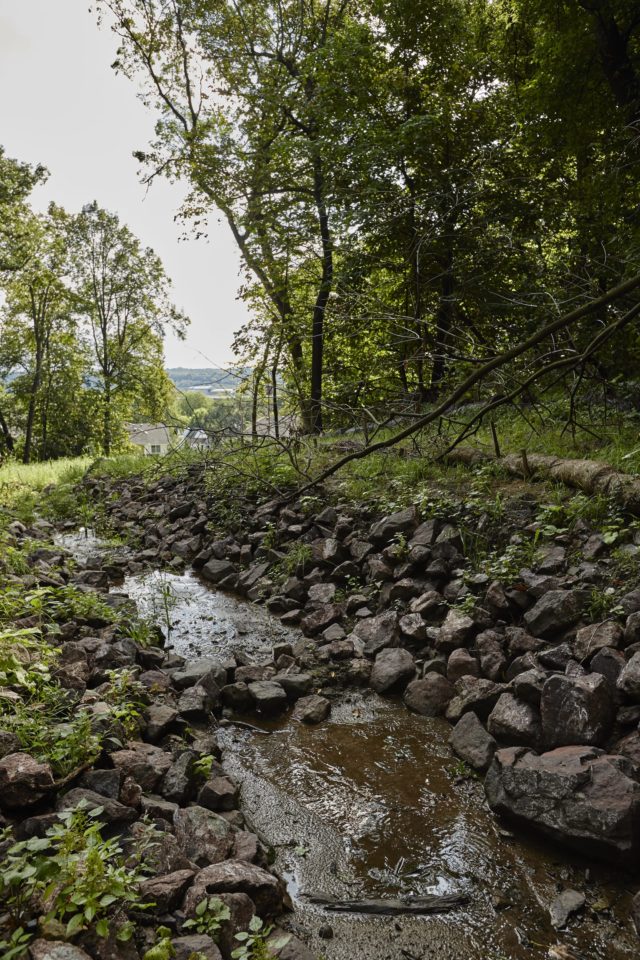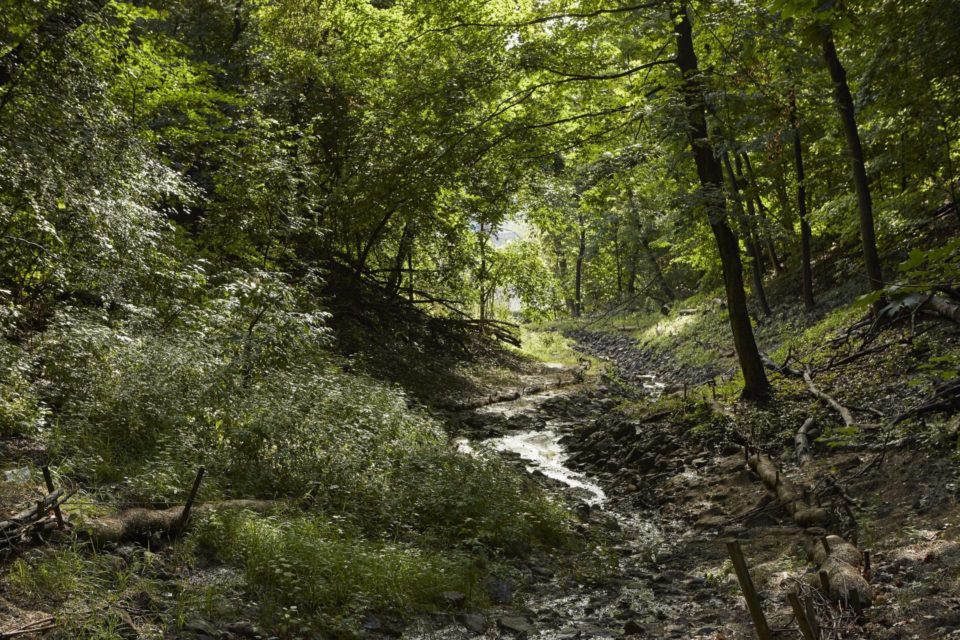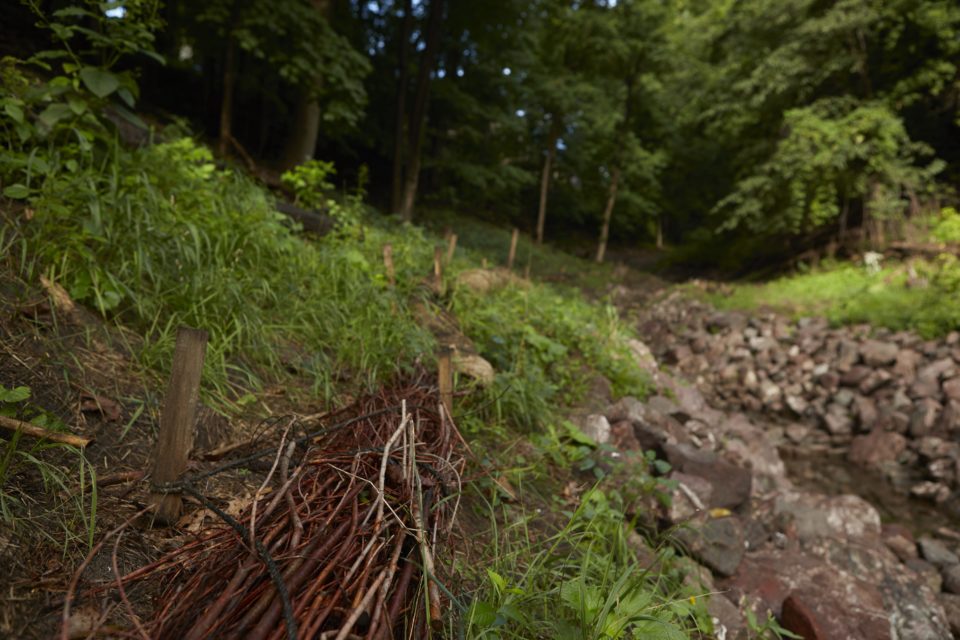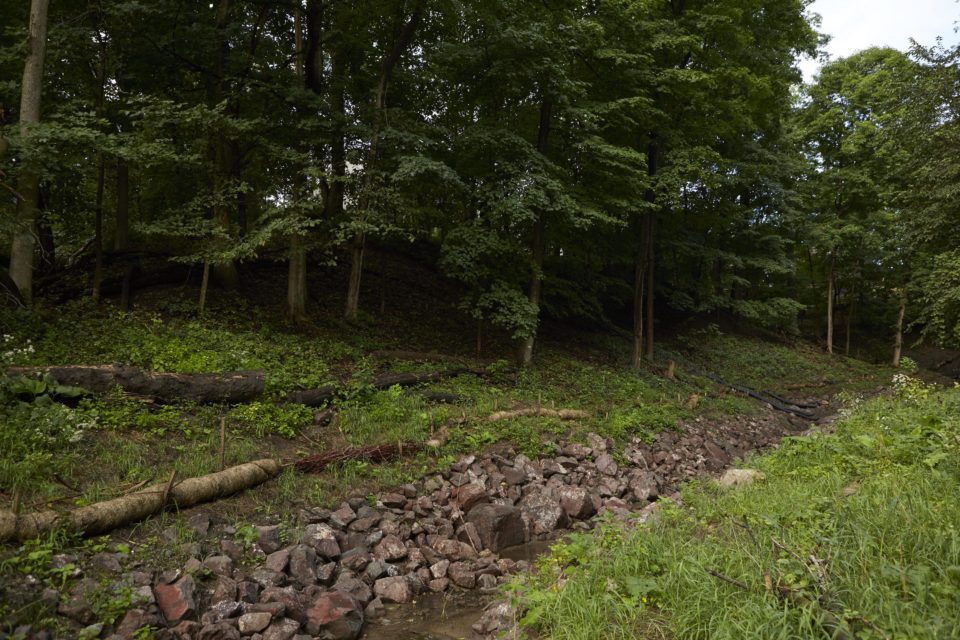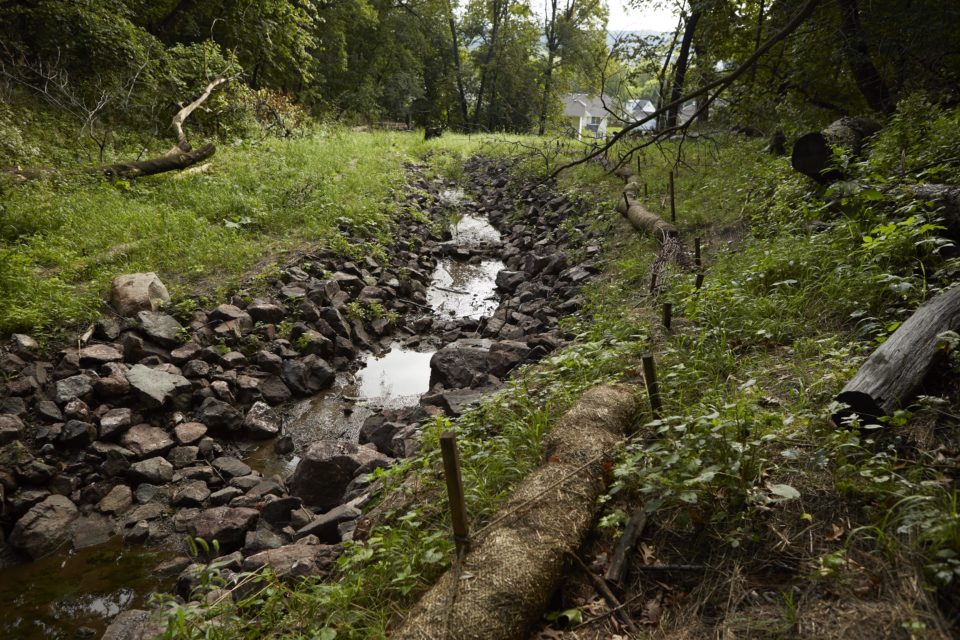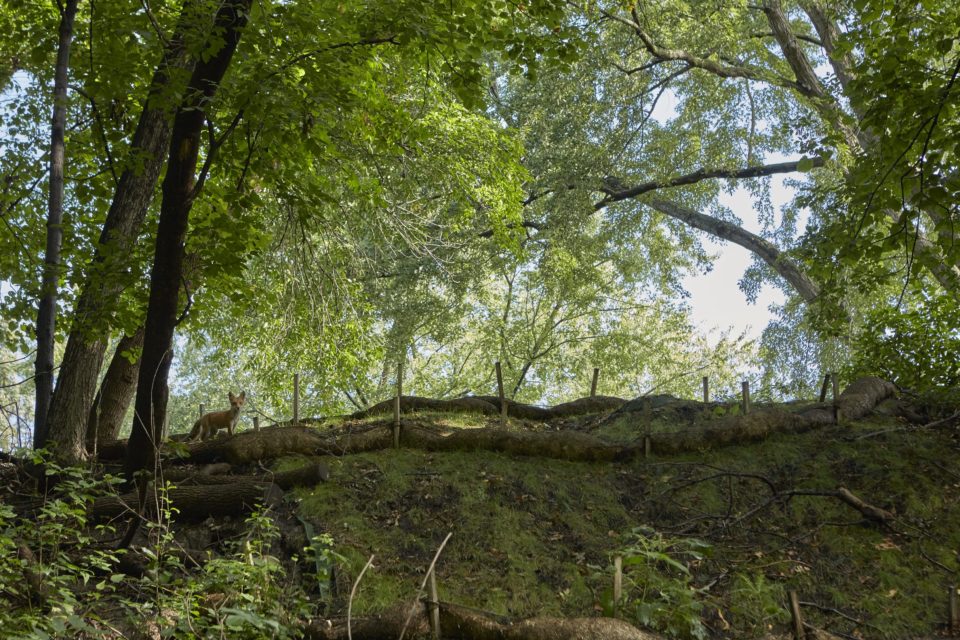Results
The stabilization project began in 2012 after securing $200,000 from CRWD and a grant from the Minnesota Clean Water Fund. Improvements included one-foot-high rock check dams along the length of the gullies, pipes at the bottom of the gully channels to bring water safely down the slope, and a stormwater basin at the bottom of one of the ravines.
In early 2014, CRWD completed the gully stabilization and began working with individual property owners in the design and implementation of water-friendly landscapes that manage residential rainwater on-site by redirecting downspouts to flat vegetated areas and neighborhood rain gardens.
Since most of the project impacted privately-owned land, communication with property owners and neighborhood residents was essential. These stakeholders provided valuable feedback throughout the planning and design process. Addressing the concerns of property owners and residents has been and will continue to be vital to the implementation and future success of the project.


